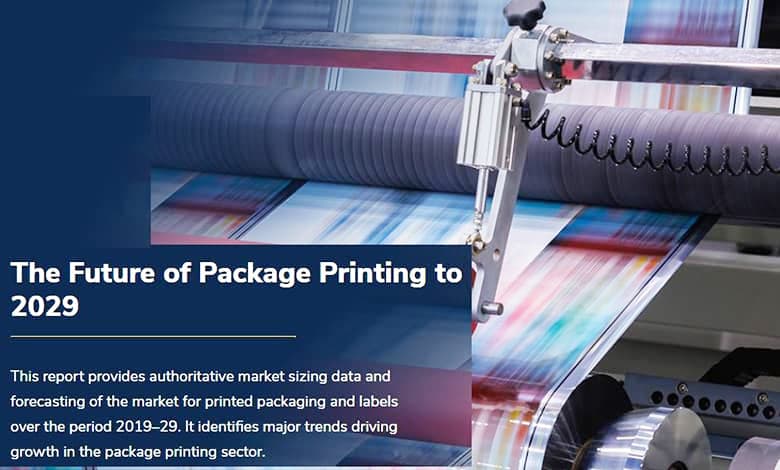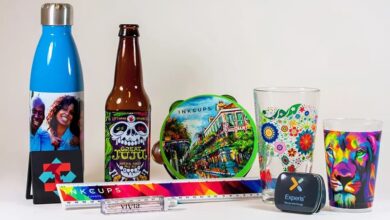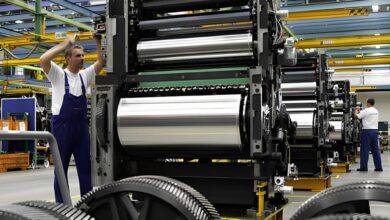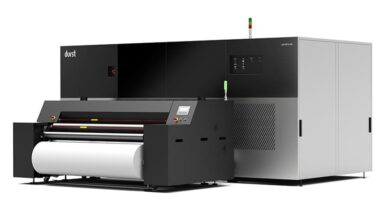Smithers Forecasts 3.6% CAGR for Package Printing Market

Packaging and labels are increasingly important to the strategic future of the printing industry, with annual sales now worth more than half a trillion dollars.
While traditional publication and graphics markets are static or in decline, rising consumption of packaged goods is fueling growth. This was witnessed at drupa 2024 earlier this year, with multiple OEMs debuting new machines for printing corrugated board, folding cartons, flexible packaging, and labels.
The Future of Package Printing to 2029 – the comprehensive market modelling from leading US-based research firm Smithers – predicts the sector’s total global value to reach $504.9 billion in 2024. This will see 14.31 trillion A4 print equivalents of labels, corrugated board, folding cartons, flexible paper and plastics, rigid plastic and metal packaging printed this year; consuming 1.54 million tonnes of ink.
Despite global economic challenges and new sustainability mandates, a steady growth trajectory is reasserting itself, pushing the sector’s global value to $604 billion in 2029 at a CAGR of 3.6%. Across the same five year forecast period, output will increase to 17.12 trillion A4 equivalents.
Both digital and analogue press makers are developing technology to address opportunities across this market. Flexo remains the most widely used printing process, especially for high-volume corrugated board, labels, and flexible formats, accounting for 52.6% of contemporary output. Gravure and offset litho are also popular, mainly for printing higher-quality graphics on folding cartons and flexible packaging, accounting for 20.1% and 17.9% of packaging and labels volume respectively.
For all analogue OEMs, the further penetration of digital print, especially the latest generation of higher throughput inkjet machines poses a direct challenge. Quality is improving on inkjet and electrophotography (toner) presses, even as they become more cost-competitive for longer print runs. These also offer much shorter turnaround times, less wastage, give greater scope for customisation, and are easier to integrate with online design and ordering systems – all of which align to calls for greater versatility from packaging buyers.
At drupa 2024, a host of new machines for high-speed digital printing of folding cartons were shown. There is also a developing footprint of single-pass inkjet corrugated presses, and narrow web toner and inkjet machines are increasingly being configured to also take short-run flexible jobs. The potential of these systems to offer added value, means that while digital only accounts for 1.1% of volume in 2024, it represents 3.9% of value. The Future of Package Printing to 2029 forecasts further expansion with digital output growing at a CAGR of 12.8% across the next five years.
In response, analogue OEMs are investing in greater automation both in pre-press and on-press; combining this with superior workflow, online maintenance platforms, and other software, as well as developing hybrid systems with inkjet stations printing variable data elements on high-speed analogue lines.
As technology evolves across the sector, OEMs and print service providers are adapting to changes in packaging materials. The drive for greater sustainability is pushing converters to use more paperboard and coated paper stocks, as well as thicker monomaterial polymer formats in flexibles.
Regulatory developments, including the EU’s Packaging and Packaging Waste Regulation (PPWR), are emphasizing recyclability. This is creating a demand for packaging printers to switch to water-based inks, invest in better de-inking technology, and work with new material sets that are easier to recover at end of life. In the narrow web segment, this is pushing converters to move towards thinner easier to separate label stocks, lowering ink coverage, and minimising or switching adhesives.

.gif)



